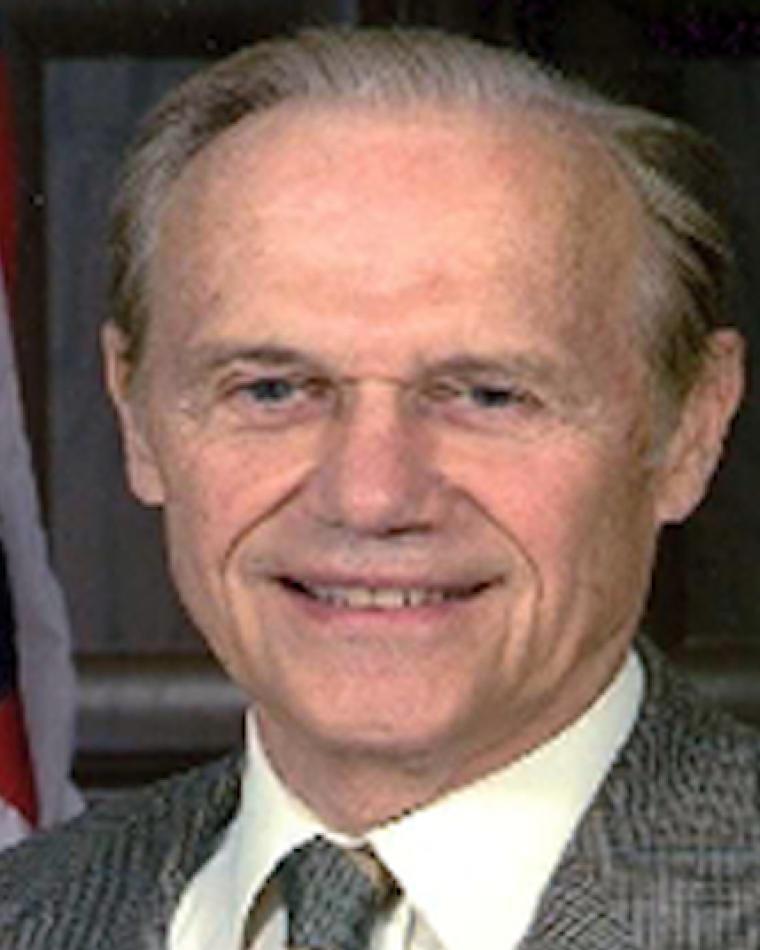
Fernand D. "Doc" Bedard
Fernand D. "Doc" Bedard
Contact Menu
August 7, 2018. With a B.S. in Physics, Magna Cum Laude, from Fordham University, a Ph.D. in Physics from the Johns Hopkins University and several years teaching at the University of Cincinnati, “Doc” Bedard was recruited by NSA in 1955, based on his graduate work in superconductivity, to participate in Project LIGHTNING. Project LIGHTNING was a program to explore multiple technologies aimed at achieving three orders of magnitude improvement in compute power for large scale processors. Although the superconducting approach being pursued at the time, cryotrons, did not prove to be the solution, his work on this program launched Dr. Bedard on a long and distinguished career in superconductivity, ranging from fundamental studies in materials and phenomena to a myriad of applications for computing and ultra-sensitive detectors.
Beyond his early cryotron work, Dr. Bedard had a major impact on several other significant programs to harness superconductivity for computing applications. He was the prime government force behind a joint IBM/NSA program to use Josephson Junctions as a basic switching element. It demonstrated the Josephson Junction’s expected high speed and low power advantages for logic applications. Doc was also a key participant in a joint government/university/industry program in the 1990s, Hybrid Technology MultiThreaded (HTMT) architecture, which sought to achieve major advances in compute power through several emerging technologies, with superconductivity playing a major part in several of them. Never one to simply be an observer, Doc continued his personal technical efforts, designing and having a prototype built of a revolutionary CROSSBAR SWITCH to provide low latency processor/memory interconnect, an essential element in a full superconducting high-performance computer.
Another area in which Doc Bedard exploited the characteristics of superconductors was in Superconducting Quantum Interference Devices (SQUIDs) for ultra-sensitive measurement of atmospheric noise at low frequencies. After fielding in far-flung reaches of the earth, including on an ice flow north of Prudhoe Bay, Alaska, Doc concluded that, in most areas of the globe, SQUID sensitivity was greater than needed. Once again he went into personal contributor mode, designing and building a non-superconductor, high sensitivity, three axes “CUBE” antenna, which is compact, easily deployable and atmospherically noise-limited in the low-frequency range.
For these accomplishments and many more, Doc Bedard received many awards and much recognition, best summed up in his being awarded the IEEE Medal for Accomplishments in Superconductive Electronics.
In addition to his significant personal technical accomplishments, Doc Bedard continually played a leadership role at NSA, serving as Director of the Laboratory for Physical Sciences and Director of Signals Intelligence (SIGINT) Research. Through these Management positions, he was able to leverage his technical skills and experience over a wide range of basic and applied research activities. These leadership activities dovetailed well with another enduring area in which Doc Bedard’s influence and efforts will be felt for decades, the development of NSA’s technical talent. As a founding member of the Senior Technical Review Panel (STRP) which provides oversight to NSA’s most senior technical development program, Doc coached, mentored and advised NSA’s “best and brightest”. Several generations of Agency technical leaders who have benefitted mightily from his dedicated and caring efforts are now playing key roles in ensuring NSA’s future success. Many others in the superconductivity community and beyond have also benefitted from his leadership and mentoring.
Dr.